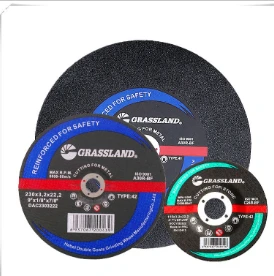Understanding Grit and Flap Discs A Comprehensive Guide
In the world of metalworking and woodworking, the tools and accessories we use play a pivotal role in shaping the quality and efficiency of our projects. Among these essential tools, flap discs stand out for their versatility and effectiveness. One of the key aspects of flap discs is their grit rating, which significantly influences their application and performance. In this article, we will explore flap discs, their grit, and how to choose the right one for your specific needs.
What Are Flap Discs?
Flap discs are abrasive tools used for grinding, blending, and finishing various materials, including metal, wood, and plastic. Composed of multiple layers of abrasive flap material attached to a central hub, these discs offer a unique combination of grinding and finishing capabilities. This design enables users to achieve a smooth finish while efficiently removing material.
Flap discs come in different shapes and sizes, typically 4½ inches, 5 inches, and 7 inches in diameter. They can be attached to various hand-held tools, including angle grinders and sanders, making them highly versatile and widely used in both industrial and DIY settings.
Understanding Grit Ratings
The grit rating of an abrasive disc refers to the size of the abrasive particles used in its construction. A lower grit number indicates coarser particles, suitable for aggressive material removal, while a higher grit number corresponds to finer particles, ideal for finishing work. For instance, a 40-grit flap disc is designed for heavy grinding, while an 80-grit or 120-grit disc is better suited for surface preparation and polishing.
The common grit ratings for flap discs range from 24 to 120 grit, with some specialized discs going beyond these numbers. Choosing the right grit is crucial for achieving the desired finish and efficiency in your project.
grit flap disc

Selecting the Right Grit for Your Project
1. Material Type The material you are working with significantly affects the grit you should choose. For tough metals like steel or cast iron, coarser grits (24-60) are recommended for swift removal. Conversely, softer materials like aluminum or wood may require finer grits (80-120) to avoid excessive damage.
2. Desired Finish Your project’s end goal influences the grit selection. If you aim for a rough finish or quick material removal, opt for lower grits. However, for a smooth, polished look, higher grits are essential.
3. Equipment The tool you use with the flap disc also matters. Ensure that your grinder or sander is compatible with the chosen disc's grit and size for optimal performance.
4. Workpiece Thickness Thicker materials typically require a more aggressive approach, meaning lower grit options may be preferred. For thinner materials, finer grits help prevent warping or damage.
Conclusion
Flap discs are indispensable tools in achieving various finishes in metalworking and woodworking. Understanding the significance of grit and how it impacts your workflow is vital for selecting the right disc for your projects. From heavy grinding to fine finishing, the appropriate grit can enhance efficiency and ensure high-quality results.
When investing in flap discs, consider the material type, desired finish, equipment compatibility, and workpiece thickness. By making informed choices regarding grit size and type, you can optimize your projects while ensuring the longevity of your tools. With the right flap disc in hand, you'll be well-equipped to tackle any task with confidence and precision.
Post time:Dec - 18 - 2024

















